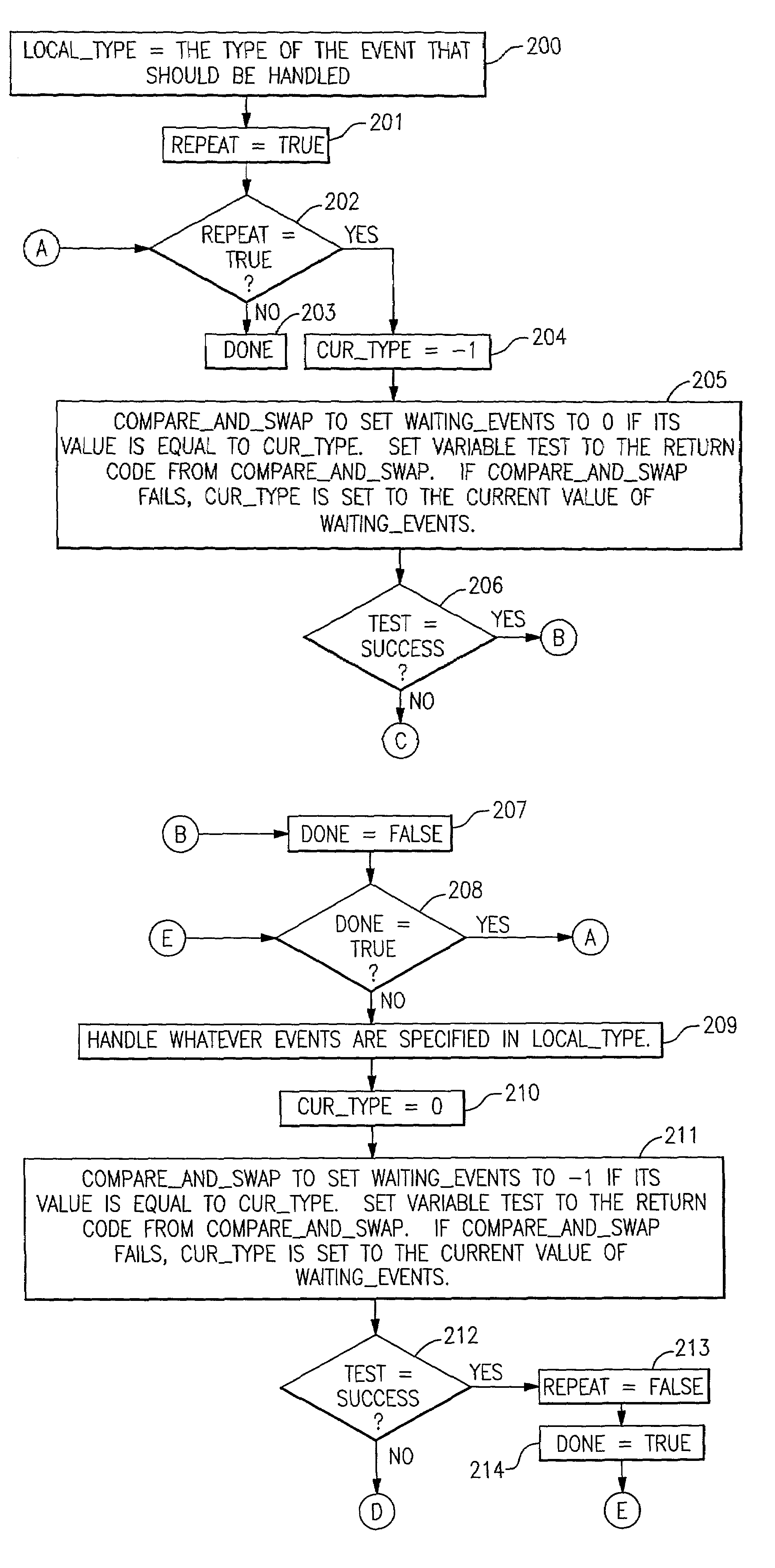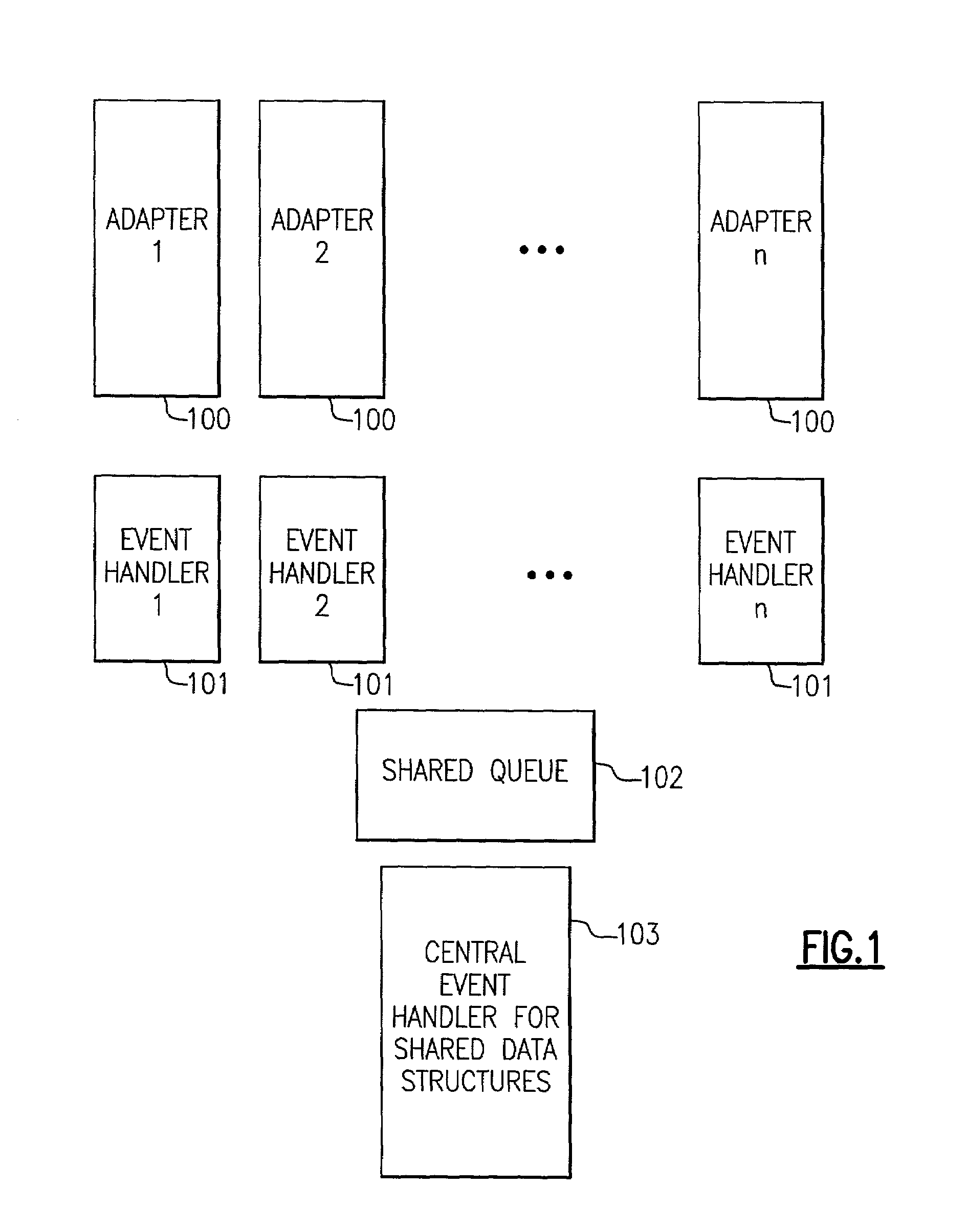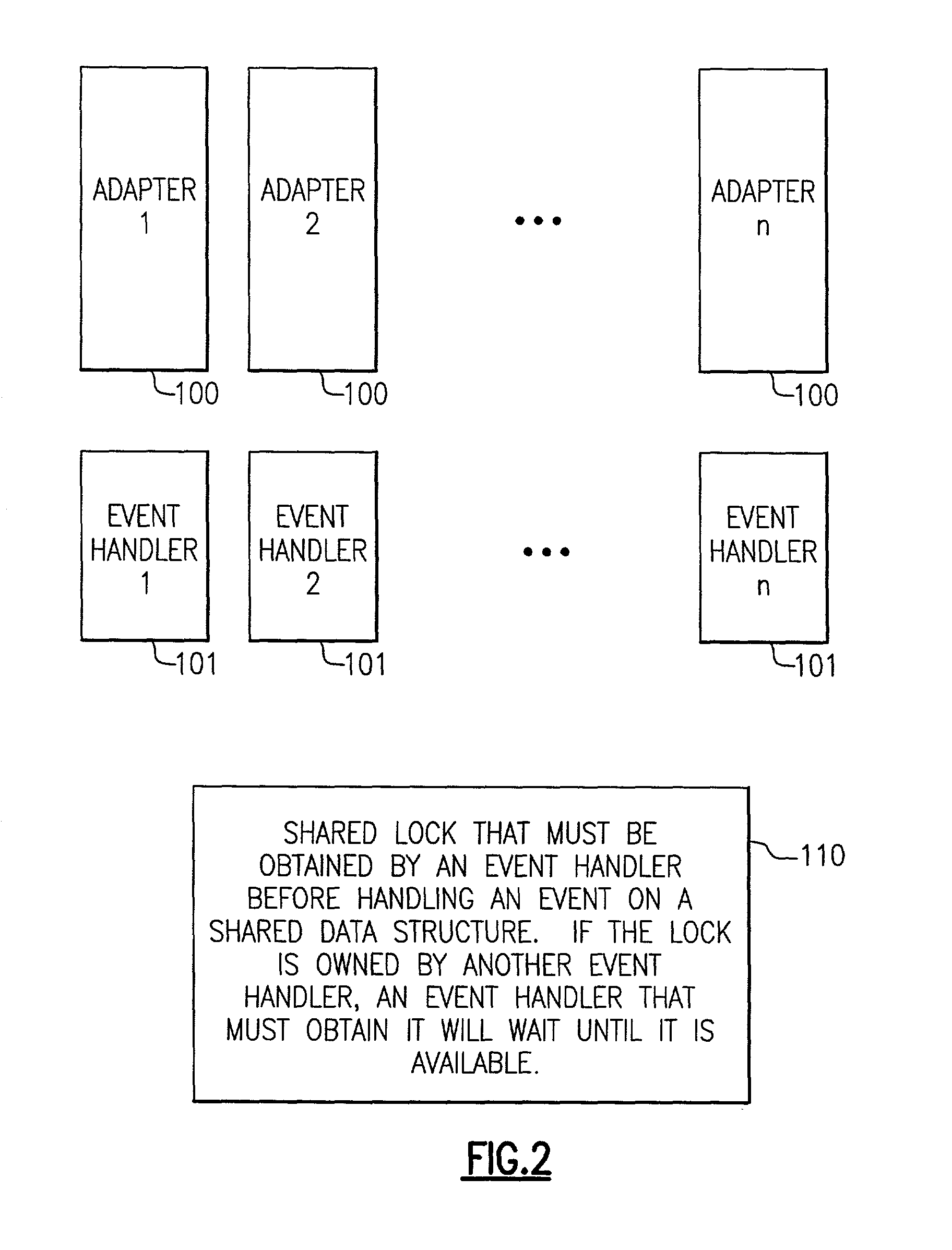Serializing event handling in a threaded system with no wait states
a technology of event processing and threaded systems, applied in the direction of multi-thread operation, program control, instruments, etc., can solve the problems of multi-thread inability to work, increasing the need for current invention, and making the solution to the present problem that much more difficul
- Summary
- Abstract
- Description
- Claims
- Application Information
AI Technical Summary
Benefits of technology
Problems solved by technology
Method used
Image
Examples
Embodiment Construction
[0026]The present invention advantageously employs Compare —and_Swap functionality (see FIG. 6) to change a relatively tiny data structure without causing the thread to wait a significant amount of time. In particular, the use of this functionality typically allows the handling of the event to be initiated in just a few instruction cycles, whereas other approaches to this problem, such as those described above, typically employ hundreds or even thousands of machine instruction cycles to accomplish. Accordingly, in this fashion, significant time spent waiting for a thread to terminate is avoided. The event is actually handled by a different thread, but this thread is one that is already accessing the shared data which is a factor that makes the process that much more speedy and efficient.
[0027]FIG. 1 illustrates a structure for handling the problems set out herein. In particular, it is seen that each adapter 100 is serviced by a corresponding event handler 101. The system shown in FI...
PUM
 Login to View More
Login to View More Abstract
Description
Claims
Application Information
 Login to View More
Login to View More - R&D
- Intellectual Property
- Life Sciences
- Materials
- Tech Scout
- Unparalleled Data Quality
- Higher Quality Content
- 60% Fewer Hallucinations
Browse by: Latest US Patents, China's latest patents, Technical Efficacy Thesaurus, Application Domain, Technology Topic, Popular Technical Reports.
© 2025 PatSnap. All rights reserved.Legal|Privacy policy|Modern Slavery Act Transparency Statement|Sitemap|About US| Contact US: help@patsnap.com



